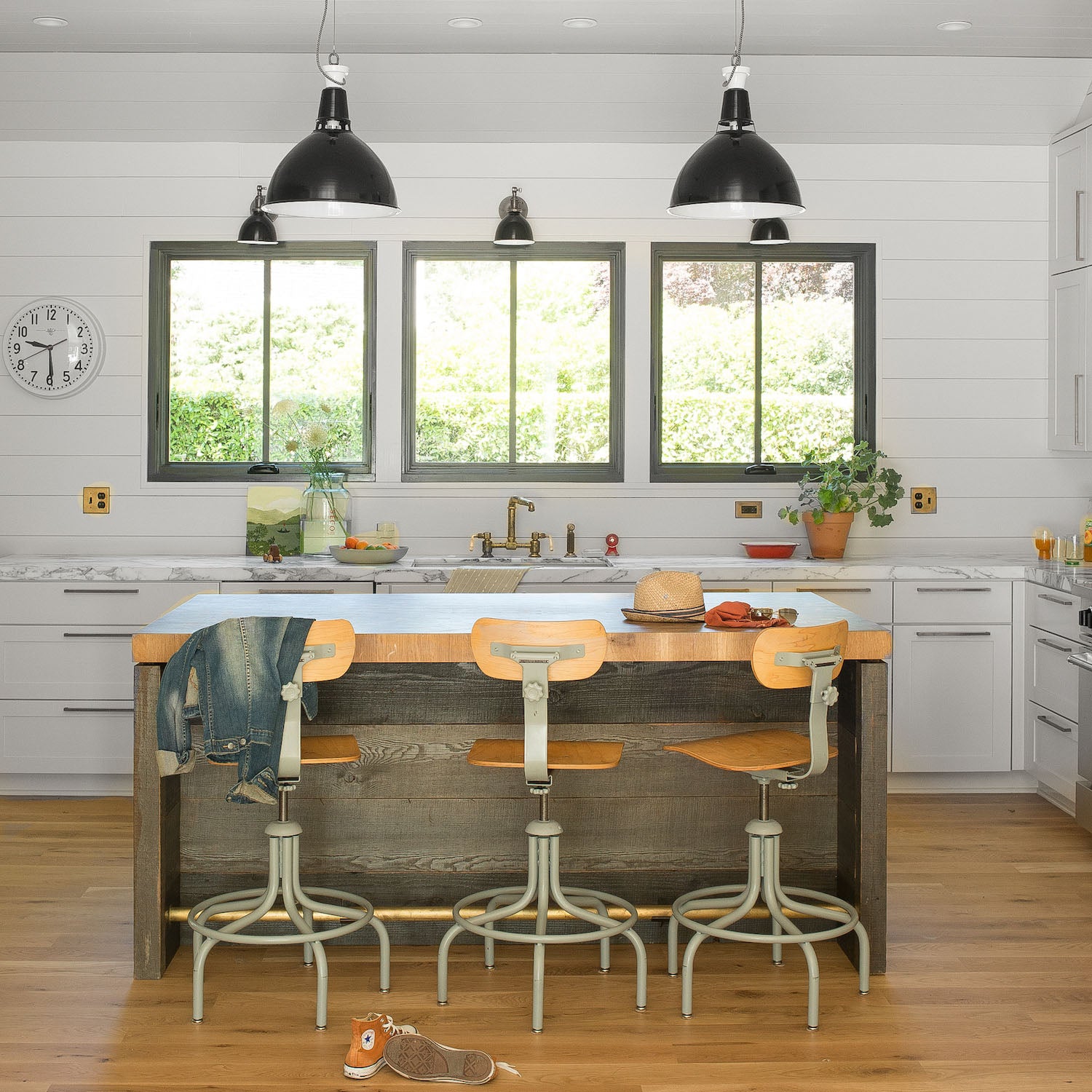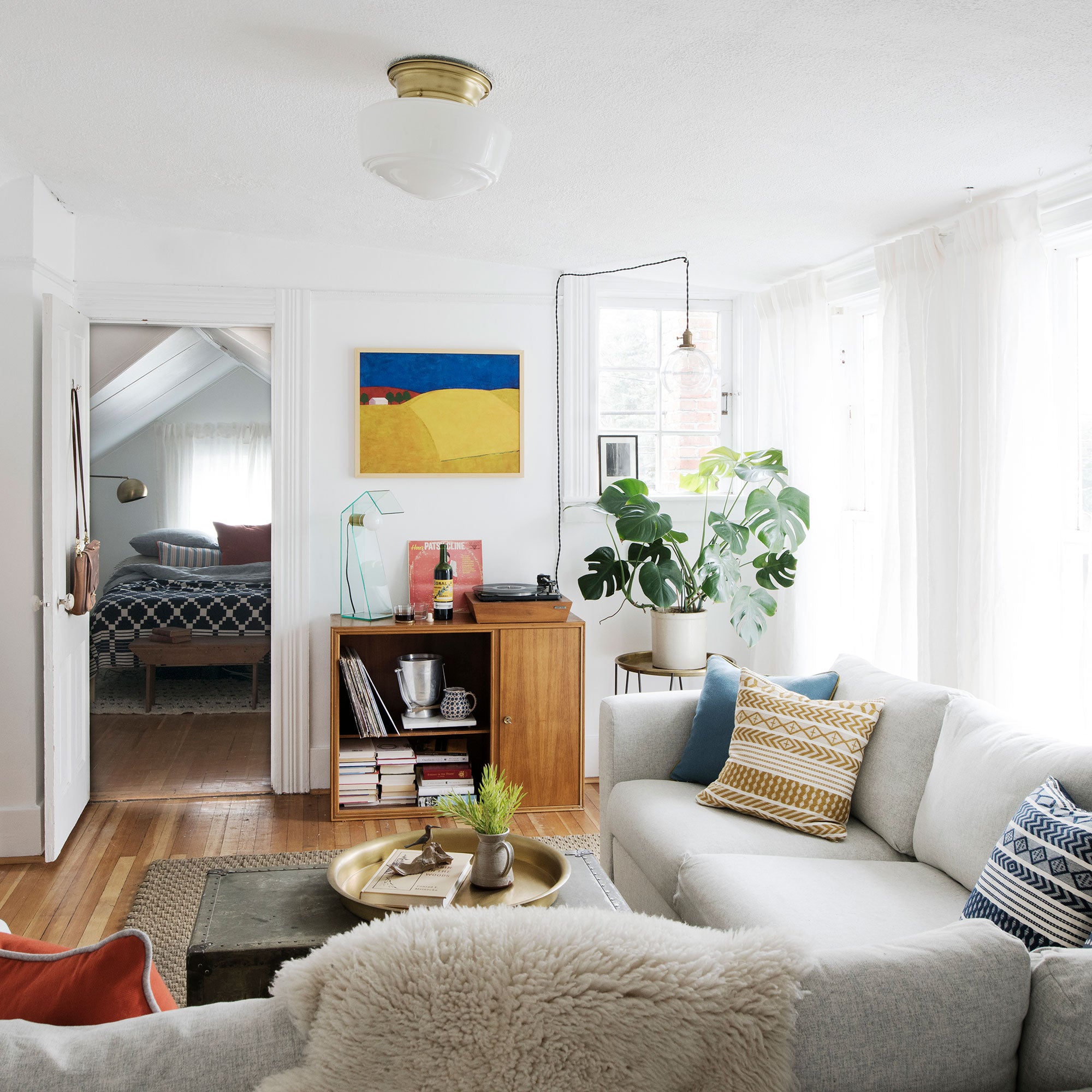How-To: Layer Different Types of Lighting

Lighting has come a long way from the days of the simple Edison bulb lamp, and knowing how to use the different types of fixtures and lamps in combination in your own home can be challenging. “Understanding how to layer different types of lighting is very important,” says Director of Product Development + Management Sarah Kirk. “The right balance makes a space feel considered, comfortable, and sophisticated.”
There isn’t really a one-size-fits-all template for lighting a room because the décor of the room, how the space is used, and personal preference play a major role in how a room should be lit. A good place to start thinking about layers of light is to understand the different types of lighting.
The Three Types of Lighting: Ambient, Task, and Accent
Interior lighting can be divided into three basic groups: ambient lighting, task lighting, and accent lighting. Each group serves a different purpose, and each group has a corresponding collection of lamps and fixtures that are best suited for supplying its type of light.
Ambient lighting can be understood as the lighting that will replace natural day light from windows when the sun is down (or if the space is short on windows). Ambient lighting should usually be somewhat brighter than other light sources, and it should project a uniform light around the room. High-lumen bulbs with a frosted finish tend to work best for this application.
Task lighting is the light used to illuminate work surfaces and zones of activity. Counter tops in kitchens, desks in offices, and vanities in bathrooms are good examples of areas that benefit from task lighting. Task lighting tends to be relatively bright and highly directional, giving light to only the area that needs it. Lights with metal shades tend to work well as task lighting because they direct the light to the work area without letting much light escape.
Accent lighting serves an ornamental purpose, meaning that it’s designed to highlight and accentuate. If you have a piece of artwork or an interesting architectural feature in your home you’d like to highlight, accent lighting is a great solution. Exposed filament bulbs are a form of accent lighting that can add a soft and warm light that elevates the mood and ambience of the room.

Tips for Using Different Types of Lighting

Balancing Light Sources in Three Different Rooms
All of those tips might be difficult to absorb in one reading, so here are three real-world scenarios for how to use these lights in combination:
Kitchens
Because kitchens are high-activity rooms, they tend to require a lot of light. Pendants are an excellent option in kitchens because they get light to the work surface without being in the way or making the space feel overly bright. A chandelier works well when placed over a kitchen island for an all-around ambient light source that also serves as a task light for the island. Put a few small sconces in key areas and perhaps an Ion lamp on a shelf as accents to tie the room together.

Bedrooms
A pendant is a nice source of ambient light while larger lamps can serve as task lighting or ambient lighting. Task lighting can be restricted to a few key areas, such as reading lights near night stands and lighting for vanities. Dimmer switches will give you a softer light when you’re winding down for the night, while also giving you plenty of daylight-bright lighting when you want to start being active in the morning.

Living Rooms
Most people use living rooms for everything from conversation to movie watching to reading or even practicing an instrument. Here a surface mount light or chandelier will provide a good source of ambient lighting and having numerous groupings of different types of light will give you the most flexibility. As is the case in the bedroom, floor lamps are a smart choice for both task and ambient lighting. Having a few movable table lamps can be very helpful, too. Make sure to put sconces on dimmer switches to provide the right amount of light when watching movies or television.



